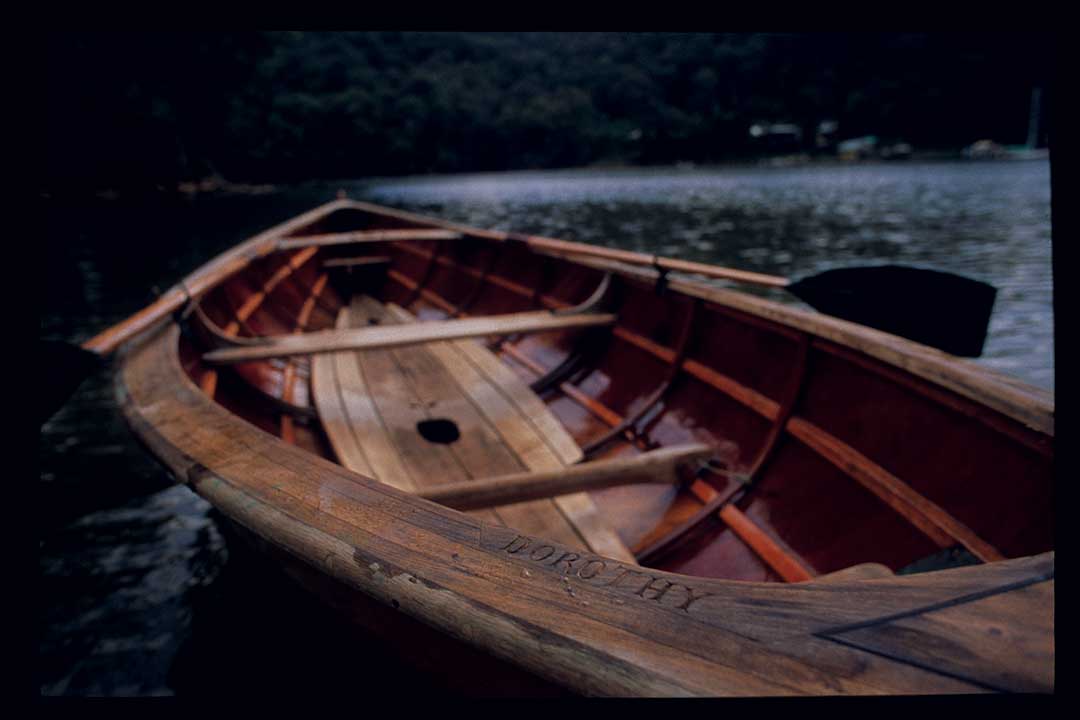Richard Leplastrier grew up in Perth, Hobart and Sydney. He studied architecture at the University of Sydney. He worked for Jørn Utzon 1964 – 66 and spent 18 months in Kyoto studying traditional Japanese architecture with Professor Masuda Tomoya. Through nearly 30 years of practice he has been fascinated by the origins of human settlement and the ‘essentials’ of living. He has been an inspiring teacher and has had a significant impact on many younger architects. He has designed lightweight timber boats and is an accomplished sailor. Leplastrier’s mostly domestic buildings demand an involvement with place and encourage a sense of reality of the present moment[1].

Times in Tasmania seem to have had the greatest impact on his subsequent life, and he speaks about his early discovery of the beauty of boats, particularly when viewed out of the water, where the subtlety of form and line is revealed. Today, in his wonderfully eloquent talks, he celebrates the cross-section of boating hulls, from traditional craft of Scandinavia, to the racing yachts of today.
Richard, as a young architect, had the privilege of spending a lot of time with Jørn Utzon, away from the pressures of the Sydney Opera House project, and was profoundly influenced by Utzon’s observations and insights. Utzon’s father was a naval architect and director of the shipyard in Aalborg. Richard likes to show a photograph of Aage Utzon in his office surrounded by drawings, models of boat hulls and french curves, including a photograph of a model of Sydney Opera House. Richard also likes to show a photo of Jørn Utzon discussing the characteristics of the boat he was designing, with an upturned model of the hull on the floor. Richard refers also to his hero, the great German sailor Dr. Manfred Curry, who wrote the book on sailing Yacht Racing The Aerodynamics of Sails and Racing Tactics, first published in English in 1928, and to the famous English sailor Uffa Fox. On a recent visit to London, Richard made a special effort to go and see the 1869 clipper the Cutty Sark under restoration, and to marvel at its hull form viewed through a scaffold fence.
Richard, and his wife Karen, have the demonstrated minimum habitation and the essentials of living, in their house at Lovett Bay – a house with no glass – basically a one room wooden tent, with outside kitchen and bathroom, and have raised their family of three fine boys in this encampment environment on the beautiful boat-only access location on Pittwater north of Sydney.
Here is a description of Richard’s boat Dorothy, in his own words, recorded by Australian writer Peter Carey for his book 30 Days in Sydney:
Anybody that doesn’t have a boat in Sydney is not a citizen of Sydney. Well, that’s my opinion, but if you’re on Pittwater it’s beyond opinion. You have no cars, no roads – you leave them behind at Church Point and travel home across the water by ferry, water taxi, or ‘tinny’. You know what a ‘tinny’ is? A beaten-up aluminium dinghy with a thirty-hp engine on the back. I’ve had plenty of ‘tinnies’ but in 1984 I finally designed a wooden boat.

Now I’ve lived on Pittwater for nearly forty years but I’ve been sailing even longer, since I was nine years of age. Most of that time was spent racing boats, and in racing boats you don’t carry anything along for the ride. Everything has to be pared back to absolutely bloody minimum. So I set out to design a boat that was the culmination of all that experience, but a boat that would also be wonderful for Pittwater. Which means it had to be not only a sailing boat but it also had to row. And that’s a hard equation because a sailing boat needs stability, and a rowing boat has to be long and thin and fine so it can be pulled through the water. It needs instability.
The plans I finally delivered to the boat builder bridged these two qualities. They were for a skiff, nineteen foot three overall, eighteen foot six on the waterline. She would be five foot gunwale to gunwale. She would draw eight inches with a hollow garboard. And her sections would be like a wine glass. I designed a very fine bow, but I also gave her a fine stern. So the boat would be able to go in both directions. She would go through the water with the minimum of resistance and she would have a very fine sailing rig in her. She’d have a fully battened mainsail so when you saw her against the light, the ribs would show like a dragonfly wing. She’d have no centreboard or keel but leeboards to stop her being pushed sideways by the wind. That would permit you to sneak up into shallow creeks and estuaries, and because there would be no centreboard, two of you would be able to sleep in the bottom of the boat, watch the birds early in the morning, and so forth. ¶ It took seven weeks for my mate Stumpy to build her and it took me a year and a half to finish her off. She was made of the eighth-of-an-inch thick skins of Australian red cedar, cross-laminated, epoxy glued and unbelievably strong. I named her Dorothy, after my mother. Dorothy was light, built like an eggshell, and she sailed wonderfully, but the way you kept her up was with your body weight. So she was dangerous, not by accident, but by design.[2]
[1] Edited from an essay by Rory Spence, in the 1999 Gold Medal issue of Architecture Australia
[2] From 30 Days in Sydney by Peter Carey, Bloomsbury Press, London, 2001